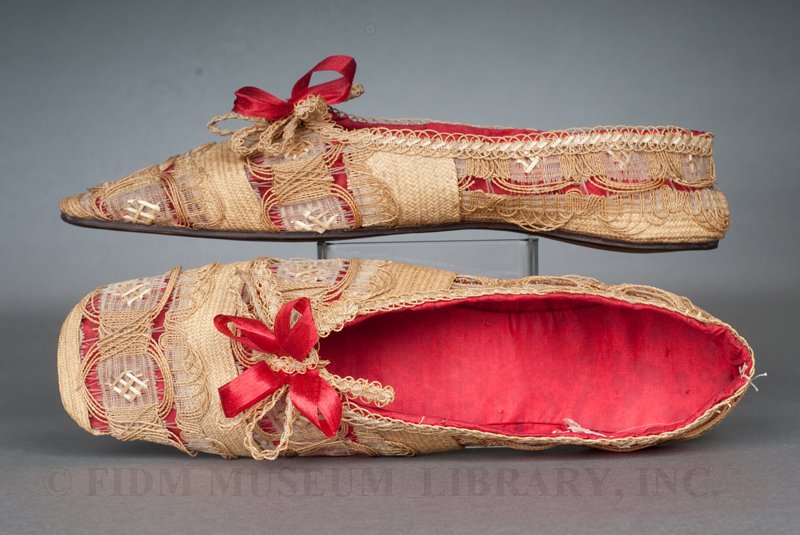Improvements in European agriculture during the first decades of the nineteenth century resulted in a glut of straw, a by-product of cereal crops such as barley and wheat. Straw found its way from the farm to fashion due to its seemingly endless supply, unique fragility, and much-admired golden sheen.
Slippers
1830-40
Gift of Steven & Linda Plochocki
2008.899.2AB
These slippers, made of straw and horsehair, were intended for use at home. They were probably made in the Tuscany region of Italy, whose port city of Livorno (traditionally called Leghorn in English) had long been the preferred source of straw for fashionable ladies' hats. A horsehair mesh supports a variety of intricate straw plaits, braids, and ornaments that were likely surplus trimmings from the bonnet industry. Crimson silk linings highlight these miniscule twists, spirals, loops, and weaves.
The fragile shoes required a light, graceful step. The feminine ideal of the 1830s and 40s owed a great deal to the popularity of ballerinas, who embodied demure poise and refinement onstage. Their costumes were a major influence on fashion, particular their delicate, flat-soled slippers, still worn by dancers today and sold as fashionable streetwear under the name "ballet flats."



those slippers are beautiful
i love your blog its so fresh and clean
bookmarked